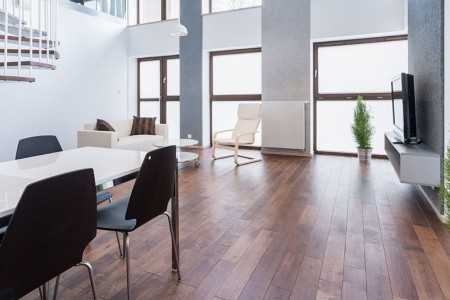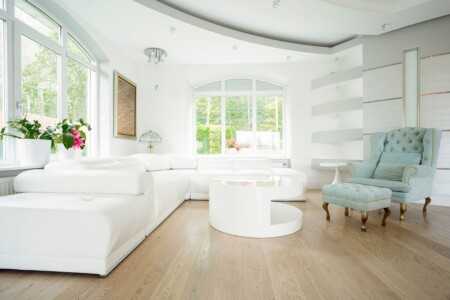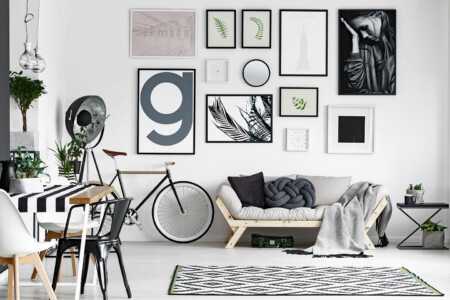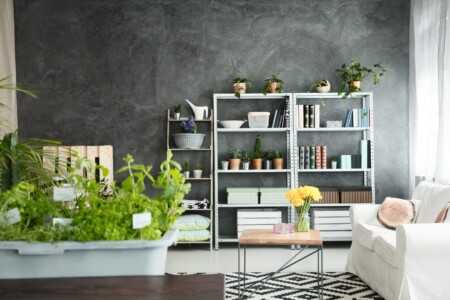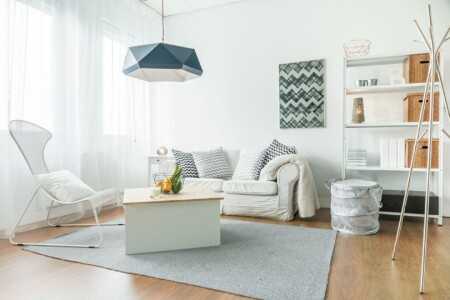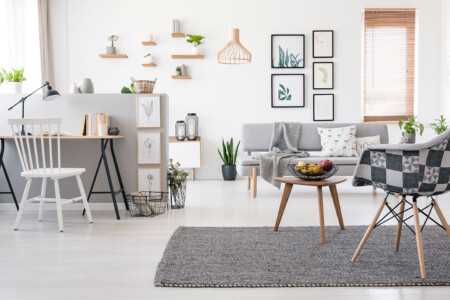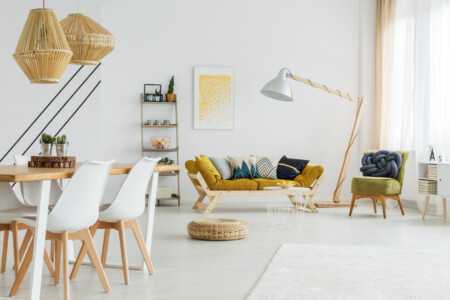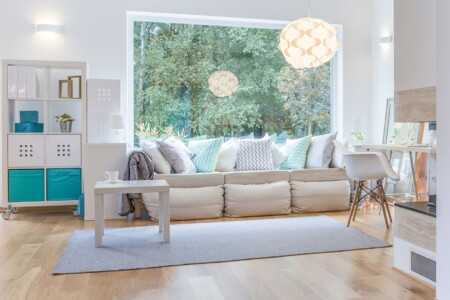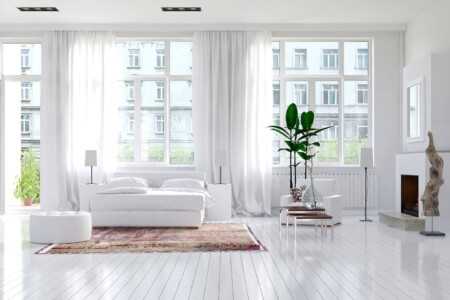Could this 7 persons 3-bedroom apartment in Hurghada hadaba meet the needs of families with blended families?

Assessing the suitability of a 7-person, 3-bedroom apartment in Hurghada hadaba for blended families
Living space dynamics for blended families in Hurghada hadaba
When considering a 7-person, 3-bedroom apartment in Hurghada Hadaba, it’s important to evaluate how the space suits the unique needs of blended families. Blended families often involve children from previous relationships, and their living arrangements can be quite different from traditional family units. Ensuring comfort, privacy, and harmony requires careful attention to how bedrooms, living areas, and bathrooms are allocated.
Bedroom arrangement and privacy needs
A 3-bedroom apartment housing seven people will naturally demand a thoughtful setup for bedrooms. Usually, in blended families, parents seek some level of privacy from children, as well as between siblings from different backgrounds. Here’s how the bedroom layout can impact living quality:
- Parent’s Master Bedroom: Ideally, the parents occupy the largest bedroom to secure privacy and a peaceful retreat.
- Shared Bedrooms for Children: The remaining two bedrooms must accommodate five children, a situation that might require bunk beds or additional sleeping arrangements.
- Age and Gender Considerations: It’s beneficial to group children according to similar ages and genders to respect privacy and minimize conflicts.
- Flexible Room Usage: One bedroom can double as a study or recreational space, easing crowding and providing space for homework and personal time.
Given these points, seven people sharing three bedrooms can work, but it depends on how well the apartment’s layout supports privacy and personal space, crucial for blended family harmony.
Common areas and family interaction
The apartment’s communal areas affect family bonding and daily living comfort. A well-designed living room and kitchen area offer space for group activities, meals, and relaxation.
- Living Room Size: Sufficient space for a large couch and dining area helps create a welcoming atmosphere where all members gather.
- Kitchen Facilities: A modern, well-equipped kitchen designed for frequent meal preparation for seven is a big plus.
- Storage Solutions: Ample storage mitigates clutter, especially important when multiple family members share the same apartment.
In Hurghada Hadaba, many apartments include balconies or terraces, which can provide additional breathing room and outdoor space for children to play safely within the family’s supervision.
Bathroom availability and scheduling
One critical aspect for blended families is bathroom access. In a 3-bedroom apartment, bathrooms are often limited—typically one or two.
- Number of Bathrooms: At least two bathrooms in the apartment can considerably reduce morning rush hour stress.
- Location and Accessibility: Bathrooms should be easily reachable from bedrooms to improve convenience.
- Hygiene and Cleaning Responsibilities: With seven people, a clear cleaning schedule and rules are essential to keep bathrooms sanitary and agreeable for everyone.
If only one bathroom is available, families need to manage time carefully and potentially introduce rules to ensure fairness and reduce conflicts.
Community environment and amenities in Hurghada hadaba
Living in Hurghada Hadaba provides more than just the apartment’s interior features. The community atmosphere and available amenities play a role in whether the apartment suits a blended family’s lifestyle.
- Schools and Childcare: Proximity to reputable schools and childcare centers is a major advantage for families with children of various ages.
- Recreational Spaces: Parks, playgrounds, and beachfront access in Hurghada Hadaba create opportunities for outdoor activities promoting family bonding.
- Safety and Security: Gated communities or secure apartment complexes offer peace of mind for parents managing blended family dynamics.
Choosing an apartment here often means access to family-oriented services which supports daily routines and overall quality of life.
Financial considerations and affordability
For many blended families, budgeting is a key part of decision-making. A 3-bedroom apartment accommodating seven people often provides a cost-effective living option compared to renting multiple smaller units.
- Rental Price vs. Family Size: A single unit with enough rooms may reduce total rent expenses, utilities, and maintenance fees.
- Utility Usage: More people under one roof typically increase water and electricity bills but keeping everyone in a centralized location can still be more economical.
- Long-term Investment: If the apartment is a purchase rather than a rental, its size and location impact property value and resale prospects in Hurghada Hadaba.
For blended families looking to maximize their living standards while managing costs, this apartment size represents a practical balance.
Practical tips for making the most of a 7-person, 3-bedroom apartment
To ensure the apartment meets the diverse needs of a blended family, certain strategies help optimize the space and foster positive living experiences:
- Use room dividers or curtains to create semi-private zones within larger bedrooms.
- Implement designated study areas to support children’s learning, reducing distractions.
- Encourage communal activities in the living room to strengthen family bonds.
- Establish clear schedules for bathroom use and chores to minimize conflicts.
- Invest in multifunctional furniture, like sofa beds and storage ottomans, to maximize usability.
By applying these approaches, families can adapt their apartment environment to better fit their blended structure.
Final thoughts on apartment suitability
While a 7-person, 3-bedroom apartment in Hurghada Hadaba can meet the basic needs of blended families, its success depends on thoughtful use of space, clear routines, and community benefits. The apartment’s design and amenities can promote comfort, privacy, and convenience, but flexibility and cooperation within the family are equally important. If these elements align, such an apartment becomes a viable and harmonious home where blended families can thrive.
Practical considerations for blended families living in compact urban apartments
Maximizing space efficiency in shared living environments
Living in a compact urban apartment poses unique challenges, especially when the household consists of a blended family. Such families often have diverse needs, ranging from privacy to shared spaces, making efficient use of limited square footage essential. Every square meter must be thoughtfully planned to accommodate various activities without sacrificing comfort.
Multi-functional furniture can greatly enhance space optimization. Items like sofa beds, foldable tables, and stackable chairs allow rooms to serve multiple purposes. For example, a dining table that folds away creates extra play or study space during the day. Additionally, vertical storage solutions, such as wall-mounted shelves and tall cabinets, help keep belongings organized without cluttering floor space.
Open floor plans or removing non-load-bearing walls can improve flow and light, making the apartment feel larger. However, sound management becomes important in such setups, especially with children of different ages needing quiet for homework or sleep. Using room dividers, curtains, or strategically placed bookshelves can create semi-private zones within shared areas.
Privacy needs and creating personal spaces
In a blended family, privacy is often a priority as family members come together from different households, each accustomed to their own routines. Even in a limited three-bedroom apartment, it’s possible to carve out private zones. Assigning bedrooms thoughtfully is critical; parents might occupy the largest room, while children’s rooms can be organized with individual sleeping and study areas where feasible.
When bedrooms share space, consider using room dividers or bunk beds with built-in curtains to give children a sense of their own territory. Soundproofing materials, like rugs, heavy curtains, or acoustic panels, also contribute to well-being by minimizing noise disturbances within the compact environment.
Routines and shared responsibilities
Blended families may have varying schedules and habits, necessitating clear routines and shared rules for apartment use. By establishing predictable times for common spaces like the kitchen and living area, stress is reduced, and cooperation is encouraged. Assigning certain storage spots for each family member maintains order and supports independence among children and adults alike.
Creating a family calendar visible in the apartment can synchronize events and chores, helping everyone stay on the same page. This practice nurtures communication and accountability—key elements of harmony in limited living space situations.
Optimizing bathroom and kitchen usage
In a small urban apartment, bathrooms and kitchens can become hotspots for delays and disputes, especially with multiple users. Efficient scheduling and clear guidelines are practical solutions to manage busy mornings and evenings.
In the kitchen, ensuring each family member has a designated area for personal items helps reduce clutter. Simple tools such as labeled containers or baskets can assist in organizing snacks and utensils, making it easier to prepare meals collaboratively. Installing additional hooks or racks can amplify storage capacity without taking up precious counter space.
Emotional space and family cohesion
Space isn’t only physical; it extends to emotional comfort as well. For blended families, fostering unity in a compact apartment means creating areas where everyone feels welcome and valued. Shared activities, such as game nights or family meals, become crucial for connection amid limited square footage.
Personal artwork, photos, or decor displaying contributions from all family members can make the environment feel inclusive and individualized. This emotional investment makes a smaller space feel like home rather than just a place to live.
Smart use of outdoor and communal spaces
Although indoor space may be tight, many urban apartments offer access to balconies, rooftops, or nearby parks. Using these areas strategically expands living capacity and provides different atmospheres for relaxation or play. Setting up comfortable seating or a small garden on a balcony creates a retreat that benefits mental wellbeing and gives children space to explore safely.
Moreover, communal areas in apartment complexes, such as playrooms or shared laundry facilities, serve as valuable extensions to everyday living spaces. Encouraging use of these amenities eases pressure on the apartment’s interior, making it easier for blended families to thrive.
Communication and adaptability for long-term success
Compact urban living with a blended family demands flexibility and ongoing dialogue. Household members must be willing to adapt as children grow, as schedules evolve, and as personal needs shift. Regular family meetings to discuss any issues or changes can help keep the living arrangement functioning smoothly.
Flexibility might involve rearranging furniture to create new spaces or modifying privacy solutions as family dynamics change. Embracing a mindset open to innovation and compromise is key to making a compact apartment a harmonious home for blended families.
Summary of practical tips
- Use multi-functional and space-saving furniture to maximize usability.
- Define personal spaces with dividers and soundproofing for privacy.
- Set clear routines and shared responsibilities for common areas.
- Organize kitchen and bathroom usage with scheduling and designated storage.
- Create emotional warmth through personalized décor and shared activities.
- Leverage outdoor and communal spaces to extend living areas.
- Maintain open communication and flexibility for evolving needs.
Summary of key points
When considering a 7-person, 3-bedroom apartment in Hurghada Hadaba for blended families, it’s crucial to weigh space and lifestyle needs carefully. This type of apartment offers a practical living solution within a vibrant urban setting, yet the limited bedrooms mean thoughtful organization and shared spaces become essential. Blended families often juggle different routines and privacy preferences, so creating flexible living areas can help ease daily interactions and foster harmony.
Practical aspects such as storage, zoning shared versus private areas, and maximizing multifunctional furniture play a major role in making such apartments comfortable and efficient. Additionally, the Hurghada Hadaba location provides family-friendly amenities and conveniences that support daily life, from schools to parks and markets, which can compensate for tighter indoor space by encouraging outdoor activities.
Ultimately, whether a 3-bedroom apartment fits a blended family of seven depends on how well the household adapts to shared living dynamics and optimizes every square meter. By focusing on communication, space planning, and embracing the neighborhood’s offerings, families can create a warm, functional home environment here. If your blended family values closeness and prioritizes efficient use of space, this apartment can indeed meet your needs well. But it requires planning and flexibility to transform compact living into a harmonious family haven.
4-bedroom apartment in Mubarak 2 for families with a baby and a toddler
3-bedroom apartment in Hadaba for families with toddlers
3-bedroom apartment in Arabia for families with school-age children
4-bedroom apartment in Magawish for young kids
4-bedroom apartment in Magawish for young kids

